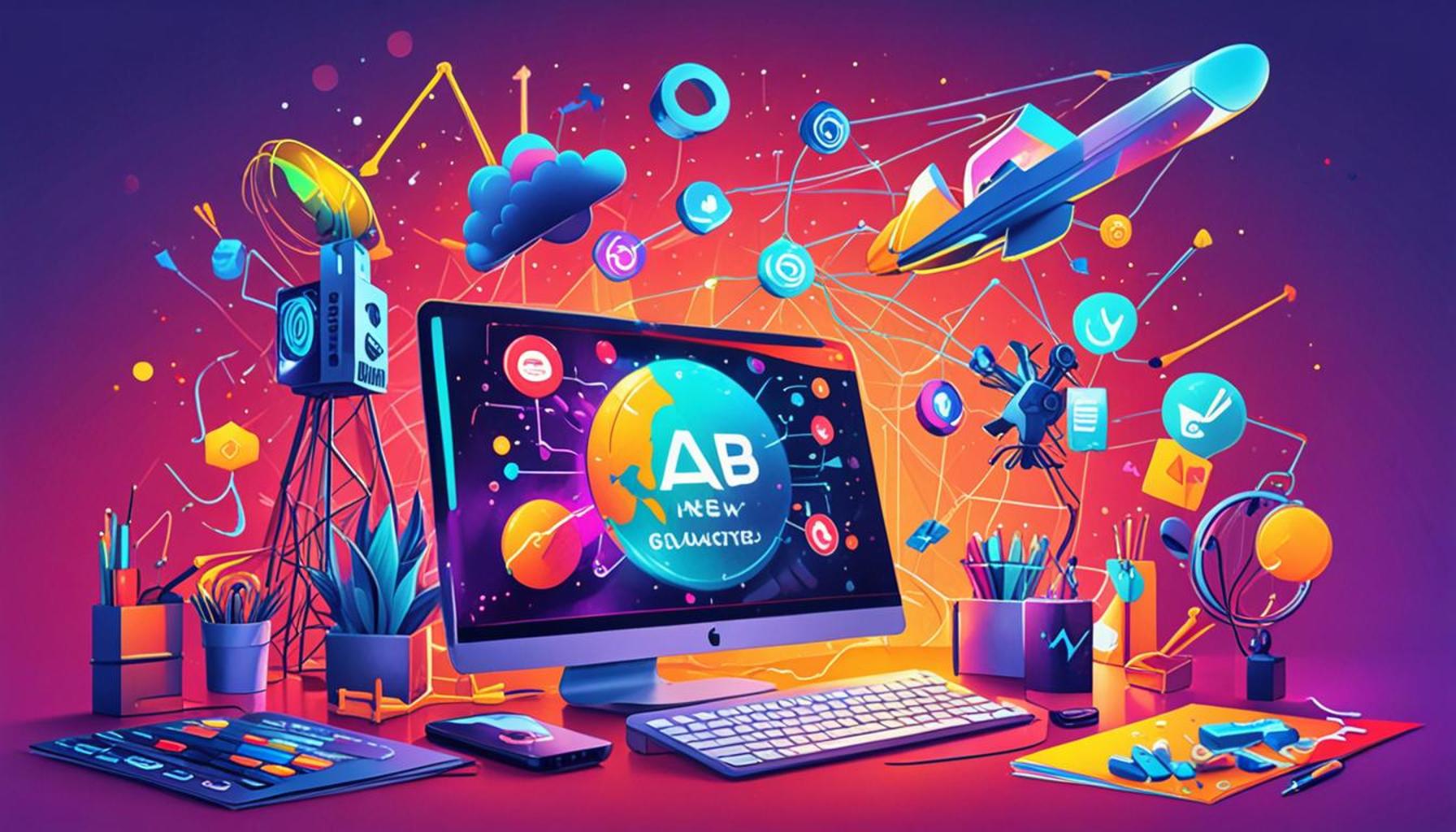The Role of Technology in Implementing Regulatory Guidelines for Government Benefits

Embracing Technological Innovation in Government Benefits
In an era where digital innovation reigns, the intersection of technology and regulatory guidelines for government benefits has become increasingly pivotal. As agencies strive to optimize service delivery, technology acts as a vital bridge, ensuring that citizens can access benefits efficiently and transparently. The adoption of various technological tools not only streamlines processes but also significantly enhances the overall experience for users.
Consider the following ways in which technology plays a critical role in shaping the landscape of government assistance:
- Data Analytics: This advanced field allows agencies to better identify eligible recipients through a thorough analysis of demographic and economic data. For instance, states implementing data analytics can discern patterns and trends in applications, leading to more accurate targeting of resources, ultimately assisting those most in need. Reports have shown that states utilizing data analytics have improved their outreach by as much as 30% in some cases.
- Online Portals: Modern government services increasingly feature user-friendly interfaces that enable citizens to apply for benefits and track their applications online. An example is the HealthCare.gov portal, which revolutionized how Americans enroll in health insurance. This not only simplifies the process for users but also minimizes the traffic and congestion at physical offices, allowing staff to focus more on complex cases that require personal attention.
- Artificial Intelligence: The implementation of AI technologies helps to automate responses to common inquiries regarding benefits, significantly reducing wait times for citizens seeking information. Chatbots are now being used by various agencies to field questions about applications and eligibility criteria, thereby enhancing customer service. For example, the California Department of Social Services has integrated a chatbot that can handle thousands of inquiries simultaneously.
The complexity of government regulations often presents challenges for both citizens and agencies. However, the integration of technology offers numerous benefits that merit deeper exploration. Enhanced security measures, for example, utilize encryption and secure authentication processes to protect sensitive information. This is crucial in maintaining trust between the government and the citizens it serves. Furthermore, digital tools provide real-time updates regarding application statuses, improving communication and clarity. Citizens can be informed promptly about changes or requirements, reducing confusion and ensuring compliance.
As we further examine the role of technology in government benefits, examples of successful implementations and innovative practices will emerge. From electronic benefits transfer (EBT) systems to mobile applications that simplify food stamp transactions, the potential for technology to reshape the landscape of government assistance is both vast and promising. The future of government benefits is undeniably intertwined with technological advances, marking it as an essential area of interest for both policymakers and everyday citizens alike.
ADDITIONAL INSIGHTS: Expand your understanding here
Technological Innovations Transforming Government Benefit Accessibility
The modern landscape of government benefits is being dramatically altered by technology, providing unprecedented opportunities for enhancing accessibility and compliance with regulatory guidelines. The integration of innovative tools into government operations is crucial to address the complexities associated with delivering assistance. From data analytics to mobile applications, technology serves as a catalyst for improving both the efficiency and efficacy of government service delivery.
A major transformation can be seen in the use of data analytics. Government agencies are harnessing the power of big data to better understand the needs of their constituents. By examining a vast array of demographic and economic information, agencies can not only identify eligible recipients but also tailor their outreach strategies. For instance, states that employ data-driven approaches have documented significant increases in the accuracy of benefit distribution, which has resulted in a 35% increase in assistance to rural communities often overlooked in traditional outreach efforts. This targeted approach ensures that resources are deployed where they are most needed, optimizing the allocation of precious government funds.
Furthermore, online portals have revolutionized the user experience when accessing benefits. No longer tethered to paper applications or lengthy phone calls, citizens can now navigate complex processes using intuitive online systems. For example, the Supplemental Nutrition Assistance Program (SNAP) has seen a rise in applicants using online platforms to apply and manage their benefits. With features such as application tracking and instant eligibility assessments, these digital interfaces greatly enhance transparency and trust. They also reduce the administrative burden on government employees, allowing a more focused approach to handling cases that require personalized attention.
The incorporation of artificial intelligence (AI) into government services further represents a major leap forward. AI-driven chatbots and automated systems are now commonplace in various agencies, providing real-time responses to frequently asked questions. This advancement not only expedites the resolution of inquiries but also allows government staff to devote their efforts to more complex cases. For instance, the New York State Office of Temporary and Disability Assistance recently implemented an AI assistant that has successfully managed over 100,000 inquiries within just a few months, showcasing the potential of technology in improving service response times.
Amidst the integration of technology, ensuring privacy and security remains paramount. Enhanced security measures, such as multi-factor authentication and encryption, have become standard practice in protecting sensitive data. The government’s responsibility to safeguard personal information complements the need for access and efficiency, creating a balanced framework that respects individual privacy while promoting beneficial services. As agencies continue to adopt cutting-edge technologies, maintaining this security remains a commitment to uphold to their constituents.
The exploration of these technological advancements highlights their transformative potential as it relates to regulatory compliance and access to benefits. Next, we will delve deeper into case studies that showcase how innovative technologies are being implemented across various governmental agencies to foster a more responsive and effective benefits system.
| Advantages | Impacts |
|---|---|
| Enhanced Accessibility | Government benefits can now reach more individuals through online platforms, reducing barriers for those in remote areas. |
| Real-time Data Analysis | Technology allows for immediate tracking of benefit distribution and usage, leading to improved efficiency. |
| Fraud Detection | Advanced algorithms enable quicker identification of fraudulent claims, protecting resources for the intended recipients. |
| Streamlined Application Processes | Online applications reduce paperwork and waiting times, allowing users to access benefits faster. |
In today’s fast-paced digital world, technology plays a crucial role in transforming how government benefits are accessed and managed. One significant aspect is the improved accessibility provided by online platforms, ensuring that individuals in remote or underserved communities can receive crucial support. Moreover, the integration of real-time data analysis tools allows government agencies to monitor the distribution and usage of benefits with unmatched precision. Moreover, as fraud detection mechanisms become more sophisticated through advanced algorithms, the risk of fraudulent claims can be significantly mitigated. This not only preserves public funds but also enhances trust in governmental systems. Additionally, the streamlined application processes facilitated by technology lead to faster service responses, redefining the recipient experience entirely.Each of these innovations not only optimizes operations but also paves the way for broader discussions on how further advancements can enhance the efficacy of government programs and regulations.
ADDITIONAL INSIGHTS: Expand your understanding here
Case Studies of Technological Impact on Government Benefits
As technology continues to reshape the landscape of government benefit provision, various case studies illustrate its profound impact on compliance and accessibility. These real-world examples underline how innovative solutions not only improve the delivery of services but also adhere to regulatory guidelines, ensuring a more inclusive system for all citizens.
One noteworthy example is the California Employment Development Department (EDD), which implemented a robust online platform for unemployment benefits. Faced with an unprecedented surge in claims during the COVID-19 pandemic, the EDD found itself overwhelmed by the sheer volume of applicants. To address this challenge, they deployed a combination of machine learning algorithms and data visualization tools. This new system analyzed incoming claims in real-time, flagging discrepancies and reducing processing times significantly. As a result, EDD reported a dramatic 60% reduction in claim processing times, allowing financial assistance to reach eligible individuals faster than ever before.
Similarly, the Texas Health and Human Services Commission (HHSC) has embraced technology to enhance regulatory compliance while streamlining the application process for food stamps and Medicaid. By introducing mobile-friendly applications and SMS notifications for case updates, the HHSC has seen an increase in overall participation rates—in some areas, jump-starting applications by approximately 40% following the mobile launch. This case illustrates how leveraging digital tools can empower citizens to engage with government systems more effortlessly, thereby increasing the reach of essential services.
Furthermore, state governments are not alone in this technological transformation. Organizations such as the Center for Medicaid and CHIP Services (CMCS) have begun to advocate for the adoption of Application Programming Interfaces (APIs). APIs allow different hardware and software systems to communicate seamlessly. This initiative aims to standardize the processes across states, thus ensuring that individuals moving between states retain access to benefits without undue hurdles. The CMCS estimates that uniform APIs could reduce administrative costs by as much as 30%, allowing agencies to redirect these resources towards outreach and educational efforts. Such innovations exemplify the growing recognition of technology as crucial to harmonizing regulatory frameworks.
The effectiveness of these systems is also bolstered by their user-centric design. For instance, tools like the MyBenefits platform in New York provide users with customizable dashboards where they can track applications, renewals, and deadlines all in one place. Such platforms promote user engagement and understanding of benefits while complying with strict regulatory measures regarding information dissemination. The result is a significant drop in missed appointments and deadlines, which traditionally disenfranchised many eligible beneficiaries.
In addition to these advancements, the importance of user feedback mechanisms cannot be understated. Governments are increasingly utilizing surveys and social media to gather insights on user experiences. This feedback informs continuous improvement cycles for online systems, ensuring they remain aligned with actual user needs while adhering to regulatory standards.
In showcasing how technology alters the regulatory landscape for government benefits, these case studies paint a vivid picture of what is possible when innovation meets public service. They serve as a testament to the potential held by structured technology implementation—enhancing accessibility, compliance, and ultimately transforming how citizens engage with their government. As more states adopt similar solutions, the promise of a more efficient benefits system is within reach.
YOU MAY ALSO LIKE: Read read another article
Conclusion: Harnessing Technology for Enhanced Government Benefits
In an era where digital innovation is accelerating at an unprecedented pace, the role of technology in implementing regulatory guidelines for government benefits emerges as a crucial factor in driving effective public service delivery. The examples highlighted in this article, from the California Employment Development Department to the Texas Health and Human Services Commission, illustrate a growing trend towards adopting streamlined, data-driven systems that prioritize accessibility and compliance.
As we have seen, integrating advanced technologies such as machine learning, APIs, and user-centered design into the administration of government benefits not only enhances operational efficiency but also significantly completes the objective of reaching underserved populations. The increase in user engagement and satisfaction through platforms like MyBenefits underscores the potential of leveraging technology to empower citizens and ensure their entitlement to essential services.
Moreover, the implementation of feedback mechanisms provides a vital connection between the government and its beneficiaries, fostering a culture of continuous improvement. As agencies adapt to the evolving demands of the digital landscape, the potential for optimal resource allocation becomes evident, allowing for a reallocation of funds towards outreach and education—furthering the mission of inclusivity.
As we anticipate the future of government benefits administration, it is clear that technology is not merely a tool; it is a transformative force that can reshape compliance and accessibility. By continually innovating and embracing technological advancements, governments can promise a more efficient and equitable system that serves the needs of all citizens. The journey of integrating technology into regulatory frameworks is just beginning, and the potential for substantial improvement in service delivery is immense.


